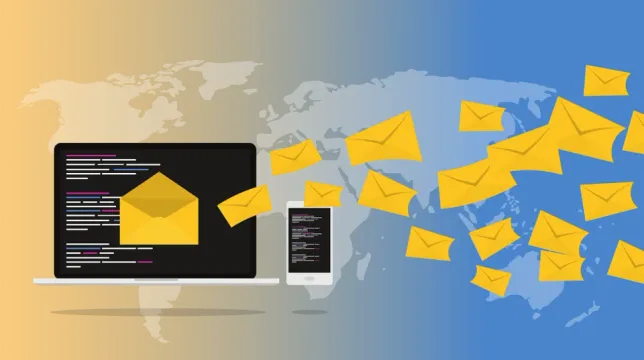How to write an email in English?

One of the main difficulties that students have when learning English is writing in English. Many times we get frustrated when we don't know where to start writing essays, stories or letters. But, fortunately there are certain tricks you can follow to write in a correct and structured way. In this case, we will focus on learning how to write an email in English, since it is often necessary if we are looking for jobs in English or want to communicate with someone who speaks English on a professional level.
The first thing to keep in mind is that if you have the ability to write texts in English fluently, it is because you already have an intermediate level in English and because you have mastered English grammar and vocabulary. If you have a more basic level, we recommend that you see our post onhow to improve your fluency in English . If you don't know your level, you can find out with our English test.
To better explain how to write an email in English, we will analyze the parts of an email:
Improve your English grammar, vocabulary and more withEF English Live Get started for free
- **Recipient (**Addressee)
It is the person to whom you address the email. Without further ado.
- Affair (Subject )
It is a very important part of the email, it will be the first thing the person who receives your email sees. Here you can summarize the topic or purpose of your email.
- Greeting
When you start writing, you have to say hello. Depending on the formality of the email, you can show more or less closeness in the greeting. We can classify the different greetings from the most informal to the most formal.
- Hey!
- Hi Karen,
- Hello Karen,
- Hello again Karen, (yes it is a second email)
- Good morning Karen,
- Dear Karen,
- Dear Ms Jones,
- Dear Sir/Madam,
- To whom it may concern, (if you don't know the person)
- Introduction
If this is your first time speaking to someone via email, you should explain the purpose of your email. The introduction is a good time to do it so we put the person in context and they can better understand the email. The introduction can also be useful for:
- Open a topic from the past:
- Regarding the last email I sent you..
- Reply to another email
- Regarding your question…
- Regarding your application
- Concerning the last changes…
- Say thank you in reference to another email
- Thank you for putting that together…
- Thank you for your help…
- Attachments
If you ever have to attach a file to the email, it is important that you explain what it is and the reason why you are sending it. It doesn't have to be something intensive, but the purpose of the file has to be clear.
- You will find attached…
- Please find attached…
- I've attached…
- Let me know if you have questions about the attachment…
- I'm sharing this with you…
- This file has…
- You'll find the attachment below…
- Call to action
Once you have written the content of your email and it has a purpose, this is your moment. Dedicate a few lines to explain what the next step is or what you expect from the email, so the person who receives it has an idea of what to do. These phrases will help you explain it better:
- I'm looking forward to…
- You can…
- Please let me know if…
- Once you… I will…
- I'm glad to help you if…
- I will wait until you…
- Farewell
There are many ways to say goodbye in an email, it depends, like the greeting, on the formality of the email. Here are some ways to close your email:
- xoxo (very informal)
- cheers
- Yours,
- Keep/stay in touch.
- Speak to you soon,
- Regards,
- Best regards,
- Thanks,
- Sincerely, (very formal)
- Signature
Your name must appear in your signature and it is the last part of the email. You can also specify your phone number or your profession if it is a corporate email.